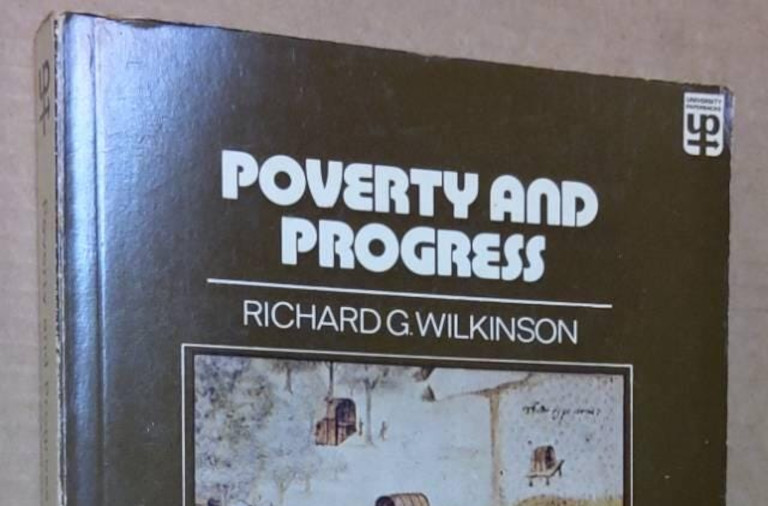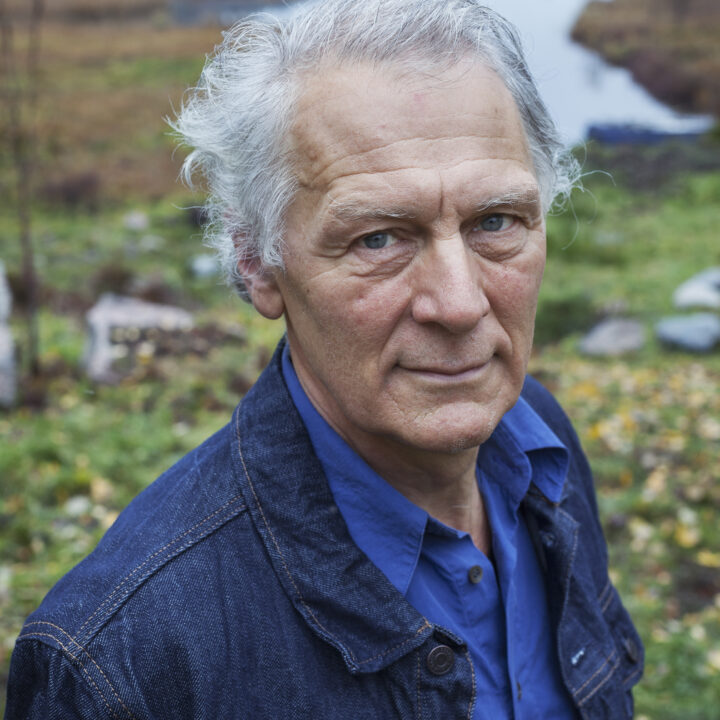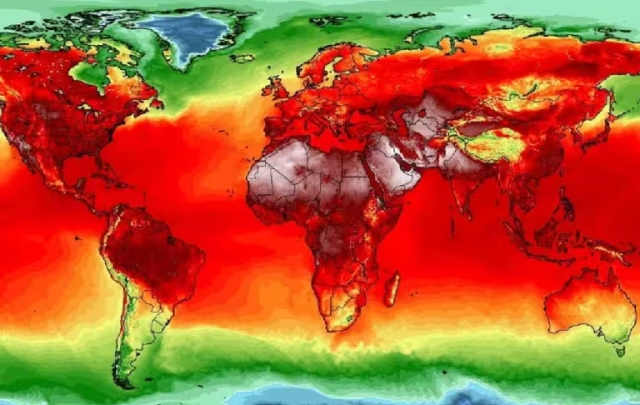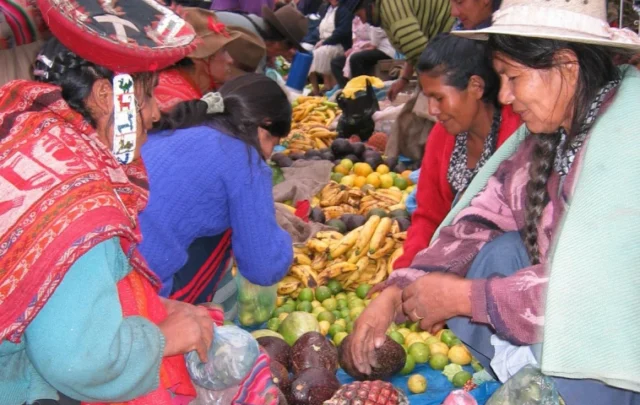Is human progress driven by necessity or by creativity?
What is progress anyway?
I just finished reading Poverty and Progress – en ecological model of economic development by Richard Wilkinson. The book is from 1973 and I came across it as a reference in a book of Herman Daly. Wilkinson is probably better known for the book The Spirit Level: Why Equality is Better for Everyone which he co-authored with Kate Pickett 2009.
“Necessity is the mother of invention” is a common saying. Poverty and Progress is an interesting and challenging read where the central thesis is that ”development” is primarily driven by ecological constraints:
”Development is needed when society outgrows its resource base and productive system. As the established economic system is proved inadequate and subsistence problems become more severe, societies are driven to change their methods. Development comes out of poverty, not out of plenty as many economic theories would lead one to suppose. ”
Wilkinson discuss the transformation of hunter and gatherer societies into agriculture and the successive steps of intensification of farming. Those transitions should not be seen as ”progress” driven by a desire to improve the human condition but rather as caused by an emerging mismatch between population and the the ecological resource base. Meanwhile, he also stresses that most historical societies, unless exposed to external pressures, were remarkably stable, and that they developed practices for sustainable use, in particular to keep the size of the population under control. While many seem to believe otherwise, historic populations were not regularly subject to starvation as the means to regulate the size of population, but rather to cultural and biological practices.
In Poverty and Progress, people abandon foraging (my preferred term for hunting and gathering) because the resources are exhausted. Therefore, they pick up swiddening (slash and burn agriculture). And when population grows, the time for forests to regrow will not be enough for the land to regenerate sufficiently for maintaining the often high productivity of swiddening. Swiddening will be replaced by hoe agriculture with bush fallow and finally constant agriculture. Plough agriculture with animal traction developed when savannas and steppes were needed for farming. In other cases irrigation systems developed to keep up production. Common for all these transitions is that they require more work to provide for subsistence. People had to work harder and longer days. In that sense, it is hard to claim that they represented any “progress” for the human condition per se. In this exposition, Wilkinson echoes Ester Boserup‘s The Conditions of Agricultural Growth: The Economics of Agrarian Change Under Population Pressure.
By and large, Wilkinson explains the industrial revolution in a similar way. He is certainly not the first to frame it as a transition from an organic economy (i.e. largely driven by biological energy and materials) to a material and fossil energy driven economy. Also here, he sees land shortage as the incentive for the industrial revolution in England with the most prominent example being the substitution of coal for wood. Coal mining itself led to other developments, in particular to steam engines to pump water out of ever deeper shafts and the transport of coal necessitated canals, better roads and soon railroads. All this needed machinery of various kinds. The work load grew tremendously. Even with more and more machinery, more manual work was needed.
While I do agree with many of the book’s proposition, I find that the ”necessity” argument a bit too stretched. For example, in my analysis the emergence of sedentary agriculture was not caused by failure of foraging, but rather as a complementary occupation developed in a long period while most resources were still gathered in the old ways. In many places, such as in Sweden, people moved back and forth between farming and hunting over longer periods of time.
The emergence of farming
There are no strong reasons to believe that human beings were forced to farm in order to feed an increasingly hungry population. It was rather improved methods of hunting and fishing or life in particularly rich border zones, such as an oasis or coastal flats, which enabled people to settle in certain places. The Norte Chico settlements just north of today’s Lima in Peru are an interesting, and perhaps odd example. These are more than 5000 years old, the oldest known civilization in the Americas. The Carla-Supe people who lived there were ostensibly engaged in farming. But they did not grow staple foods; instead they grew cotton and gourds, needed primarily for their extensive fishing. The cotton was used to make nets and lines, while the gourds were used as floats.
The first farmers could not feed themselves from farming alone to begin with; if they had tried, they would have starved to death. On the contrary, farming was almost certainly developed by settled people who still got most of their food through the old ways of hunting and gathering. They farmed certain crops that were uncommon and difficult to find, such as medicinal herbs, or crops that they fancied a lot, more like gardening. In Mesoamerica, domestication of maize, beans and pepper can be traced back ten thousand years, but it was not until five thousand years later that domesticated plants and animals dominated the food system, a clear indication that a foraging culture can be competitive with farming, even under conditions which are conducive to farming. As settled populations grew, farming changed from being an opportunity to a necessity. From Global Eating Disorder
Also, in later stages of development, I find many indications that people developed new technologies or increased production without being forced to do it. The agrarian revolution in the 19th century in Sweden was hardly driven by a pressing need to feed a growing population, but rather with the emergence of the market economy, aka capitalism. Also, it is hard to see that necessity as the mother of invention is applicable to a huge array of technological innovations. It is hard to understand that the iPhone or TikTok has emerged out of needs or necessities. In general, I believe that rich societies and people tend to innovate more than poor societies and people.
Having said that, not too long ago, I wrote that: ”AI is something that is desperately needed to deal with the complexities of the system and the increased flow of information caused by digitalization,” rather than an innovation giving us new opportunities.
Wilkinson briefly discusses education. In the general debate, education is often framed as progress, as it is an “improvement” for humans. But we could, of course, also see it as just another necessity. Employees talk about the need for more qualified staff, economists speak about the development of human capital as essential for development and parents tell their children they have to go to school and higher education in order to get a job. All countries except Bhutan, Papua New Guinea, Solomon Islands, and Vatican City have compulsory education laws. In most countries education is mandatory for at least 7 years and in several more than 12 years (Wikipedia). We hear about child labour in the 19th century and still approximately 160 million children are engaged in waged work. I certainly don’t want to defend exploitation of children, but when you think about it, mandatory schooling can be seen as another version of forced child labour. With that perspective, we should count also the many hours spent in school as part of the work necessary to keep our societies going. There are many other aspects of contemporary society which are mostly framed as improvements but when looking at it more closely, they can also be seen as just requirements that have to be fulfilled.
Even if I don’t fully agree with Wilkinson’s thesis that development is driven by need, I think he demonstrates quite well that in a long term perspective, we actually spend more and more effort to maintain human societies. Most of that work is today based on external energy resources and overuse of biological and mineral resources. He also demonstrates how much of what we call progress and consumption are essentially necessary rather than discretionary luxuries. He discusses, in the vein of Kenneth Boulding, that the growth of the GDP should be seen as an indication of increasing needs and problems rather than increasing welfare. We tend to see the GDP as an increase of income, but it is simultaneously also an increase of costs.






